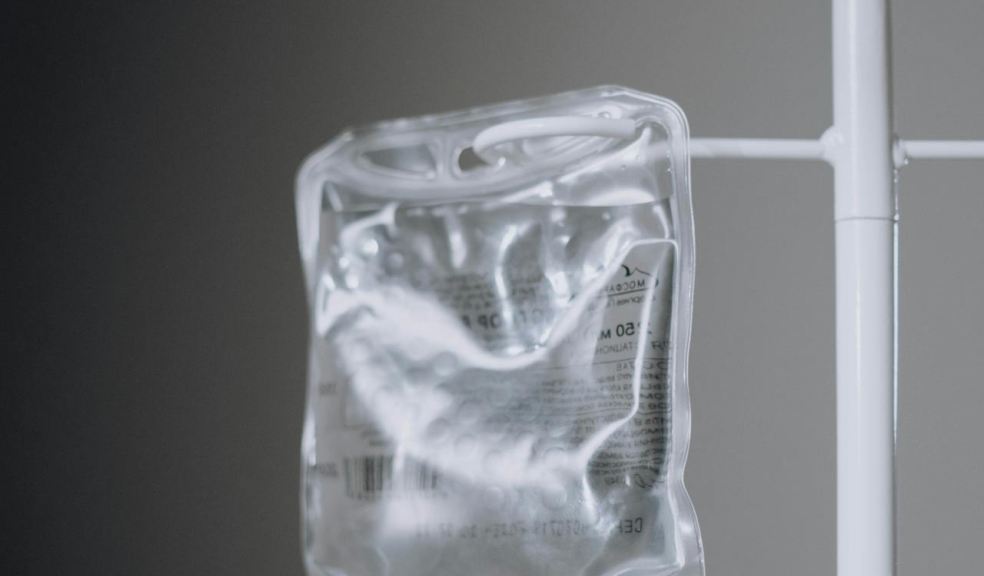
IV Therapy: What You Should Know
Did you know that nearly 85% of all hospitalized patients receive IV therapy? This method is fastand efficient, getting medications and vitamins straight into your blood. It's a quick way to get whatyour body needs, but it's important to know the risks. Keep reading to understand the other benefitsand everything about IV therapy.
Quick Facts
• IV therapy involves administering medications and fluids directly into the bloodstream.
• This method is highly effective for quick hydration and nutrient delivery.
• Common applications include treating dehydration and pain management.
• It's essential to consider IV therapy risks, such as infections and vein inflammation.
• Always ensure that IV treatments are administered by qualified healthcare professionals.
What is IV Therapy
Intravenous therapy, or IV therapy, is when fluids are given directly into a vein. This methodquickly delivers liquids, skipping the stomach for fast results. In hospitals, IV therapy is used togive fluids, medicines, blood, and nutrients.
IV therapy is key for quick treatment in emergencies or when patients can't take medicine bymouth. A special type, hydration therapy, helps keep the body hydrated by adding fluids andelectrolytes.
How Does IV Therapy Work
During the IV drip procedure, a healthcare professional puts a small tube called a cannula into a vein. This is usually in the arm or wrist. The tube connects to an IV bag filled with vitamins, minerals, medications, or hydration solutions.
The IV therapy is administered by letting these substances flow directly into the bloodstream. Thismethod is quick and efficient. It allows the body to use these nutrients or medications right away.
Oral ingestion, on the other hand, takes longer. It needs to go through the digestive system first. So, IV therapy process is much faster.
Here’s a brief overview of the IV therapy process:
1. A qualified healthcare provider prepares the IV solution customized to the patient’s needs.
2. The cannula is skillfully inserted into a vein, often in the arm or wrist.
3. The IV bag is connected to the cannula, allowing for a steady and controlled flow of thesolution.
4. The entire procedure is monitored to ensure safety and effectiveness.
This concise breakdown shows how the IV drip procedure is both practical and effective. It deliversessential nutrients and medications directly into the bloodstream.
IV Therapy Benefits
IV therapy is a popular choice for many reasons. It quickly addresses dehydration, which is key forserious hydration needs. This fast hydration can quickly ease dehydration symptoms.
IV therapy also offers quick medication delivery. This is vital in emergencies when every secondcounts. It allows doctors to give medications directly into the blood, saving lives and improvinghealth outcomes.
Another great thing about IV therapy is how it boosts nutrient absorption. Given intravenously, nutrients are absorbed better than when taken by mouth. This helps with energy, treating hangovers, and overall health.
What kind of Vitamins and Minerals can you Get Through an IV
IV vitamin therapy is a special way to get important nutrients into your blood. This method skipsyour digestive system. So, your body gets more of the nutrients it needs.
• B-Complex Vitamins: These are key for energy, brain health, and cell growth.
• Vitamin C: Boosts your immune system and fights off free radicals.
• Magnesium: Helps your muscles, nerves, blood sugar, and bones.
• Calcium: Keeps your bones strong and supports many body functions.
• Myers’ Cocktail: A mix of magnesium, calcium, B vitamins, and vitamin C. It helps withfatigue, migraines, and muscle spasms.
There are different IV fluids for various health needs:
1. Saline Solution: The most common, used for hydration and carrying other nutrients.
2. Lactated Ringer’s Solution: Has electrolytes, great for dehydration and balancing fluids.
3. Dextrose Solution: Has glucose, perfect for quickly raising blood sugar.
IV vitamin therapy is a fast and effective way to boost your health. Knowing about IV fluids andnutrients helps you choose the best for your wellness.
Risks and Side Effects
It's important to know about the side effects and risks of IV therapy. Even though it's safe whendone right, there are some dangers.
• Infections: Bacteria can get into the blood if the equipment isn't clean or if it's not put incorrectly.
• Vein damage: Too many attempts or improper needle insertion can damage veins or causebruising.
• Allergic reactions: Some people might have a bad reaction to what's in the IV fluids.
Also, using IV therapy too much can cause big health problems:
• Electrolyte imbalances: Too many electrolytes can mess up the body's balance.
• Hypervitaminosis: Too much vitamin can be toxic, harming the heart and kidneys.
Talking to doctors is key to avoid these side effects and make sure treatments are safe.
What to Expect During IV Therapy
When you get IV therapy, a healthcare provider will first check your medical history and currenthealth. This helps make the IV drip just right for you. After that, they will get ready the equipmentneeded for the therapy.
The IV therapy starts with a sterile needle going into your arm's vein. This needle connects to an IV line. Through this line, the treatment solution flows. The whole process is done carefully to avoidinfection risks.
The time it takes can vary, from 20 minutes to an hour, depending on the treatment. Most peoplefind it pretty comfortable, though they might feel a tiny pinch when the needle goes in.
As the treatment starts, you might feel more hydrated, energized, or your symptoms might lessen. The healthcare provider will keep an eye on how you're doing. Knowing what happens during IV therapy can make you feel more at ease and relaxed.
Where Can You Get IV Therapy
Finding the best IV therapy locations is key for a good and safe experience, and your options varydepending on your needs. Hospitals often provide IV therapy for emergencies and more seriousmedical conditions, while specialized IV drip clinics like Hydrate Lounge and Reviv Wellnessfocus solely on infusions that support hydration, energy, and overall wellness.
Some wellness centers, such as those at Thrive Wellness Bali, also incorporate IV therapy as part oftheir broader health programs..
If you're visiting Bali and happen to experience digestive issues, often referred to as Bali belly, IV therapy can offer quick relief. Especially in popular tourist areas, you can easily find options for Bali belly IV through mobile providers and wellness clinics that cater to travelers. With so many IV drip clinics and therapy locations available, it's easy to find one that suits your needs and lifestylewherever you are.











